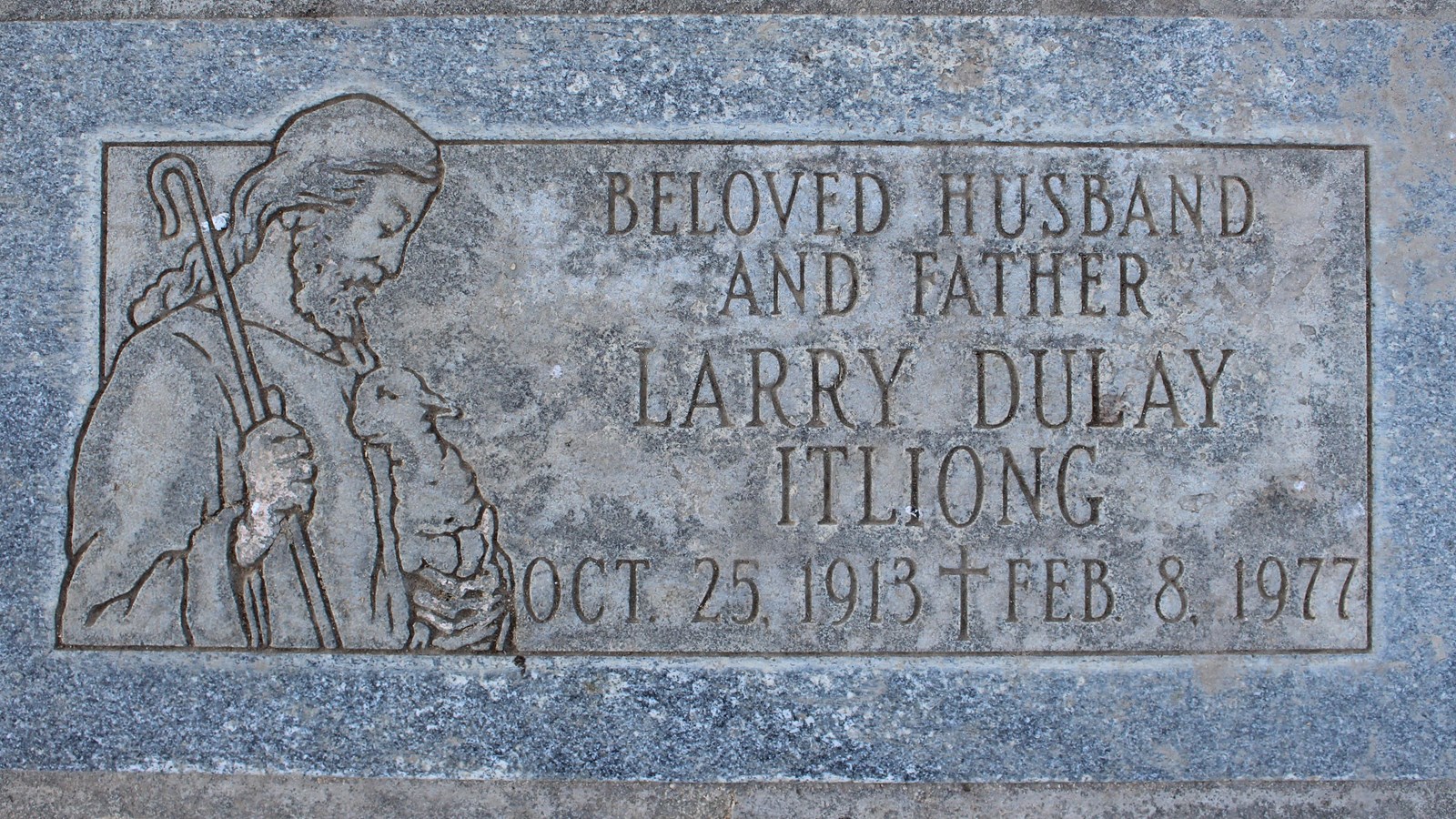Last updated: July 29, 2024
Place
Gravesites of Larry Itliong and Richard Chávez

NPS / V. Delgadillo
Audio Description, Cellular Signal, Parking - Auto, Restroom
Many people who were involved in the farmworker movement were laid to rest in the North Kern Cemetery, including notable Delano Grape Strike leaders who dedicated their lives to the movement.
Restrooms are available at the cemetery office during business hours, Monday - Friday from 8:00AM - 4:30PM.
Larry Itliong
For many years, labor leader Larry Itliong fought for the rights of Filipino farmworkers, then later worked alongside Cesar Chavez as they merged their unions. In 1965, wage disputes in Southern California emerged between growers and Filipino farm workers. Filipino farm workers were offered lowered wages than Mexican farm workers, even after struggling for years to receive the same pay. As the leader of the Agricultural Workers Organizing Committee (AWOC), Larry Itliong called a meeting to propose a strike. On the evening of September 7, 1965, AWOC members voted to strike. On the following day, over 2,000 Filipino farm workers and members of the AWOC marched off the vineyards in what would become the beginning of the Delano Grape Strike.
Both Larry Itliong and Cesar Chavez knew growers historically pitted the races against each other to break strikes and defeat unions. So Larry approached Cesar, asking the Latino members of his National Farm Workers Association (NFWA) to join the grape walkouts. Cesar was not yet ready to join a major farm strike. As Cesar, Dolores Huerta, and other leaders of the Latino union debated the issue, Cesar's wife Helen settled the matter by asking, "Are we a union or not?" On September 16, 1965, Mexican Independence Day, NFWA members cast a unanimous vote to join the Filipinos' picket lines during a meeting at Our Lady of Guadalupe Catholic Church Hall. The AWOC and NFWA merged in 1966 to become what is today the United Farm Workers. By the 1970s this multi-ethnic effort won increased wages, benefits and pesticide protections for farm workers. Larry's fight for justice for farm workers in America continues to benefit today's field laborers who feed our country and has inspired generations of activists.
At the urging of Larry Itliong and other Filipino union leaders, the Agbayani Village, a retirement home for elderly and displaced Filipino farm workers, was built by the farmworker movement on the Forty Acres. Agbayani Village is another location in this mobile app.
Larry Itliong's grave is located on the southeast side of the cemetery, five rows to the east of Carnation Road and 52 plots south of the main office.
Richard Chavez
Richard Chavez was responsible for development of the Forty Acres property and led construction on three of its four primary structures. In addition to his skilled oversight of Forty Acres, he made numerous important contributions during his 30+ years with the farmworkers movement. He organized successful boycotts of grapes and other products in New York and Detroit. He oversaw United Farmworkers (UFW) contracts and union bargaining, and was also an elected UFW leader. Richard passed away in 2011.
To find Richard's grave at the North Kern County Cemetery in Delano, check at the office for a map. The office is located on the east side of the cemetery near Austin street and 7th avenue. If the office is closed, a small version of the map is included in this app.
The grave is located near the Austin street and 7th Avenue side of the cemetery, on a road named Lily of the Valley Drive. You will find Richard's grave on the row second from the right of Austin Street and north 12 plots from Lily of the Valley. Look for the Huelga eagle engraved on his grave.
In 1962, Cesar asked Richard to design a symbol for the union to be unveiled at its founding convention in a downtown Fresno movie theater. Richard's design featured a stylized Aztec black eagle with squared off wings that would be easy for people to reproduce. It became an iconic symbol that inspired union members and millions of others around the world.
